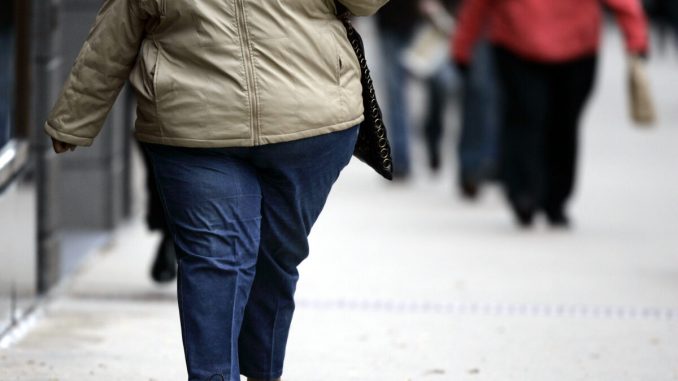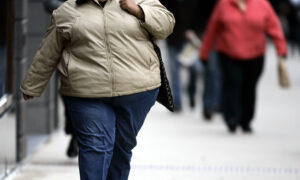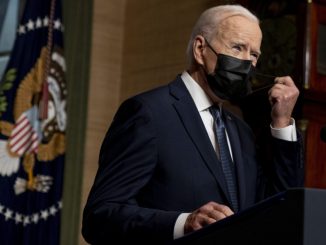

Commentary
The link between severe COVID-19 outcomes and socioeconomic inequality was made clear in the current pandemic.
We function here as prognosticators and contrarians who offer our opinions in the hopes that it may help drive debate and elucidate the issues that may inform decision-making. We are not the reader’s clinician.
We argue strongly for a socioeconomic linkage with COVID-19 and that it should receive a far greater importance than has been given.
When we talk about the harmful impact of COVID-19 as it pertains to socioeconomic status, we’re referring to the heightened impact on poorer populations, and these tend to be minorities and people of color. However, our argument applies to all people regardless of race or ethnicity, for impoverishment exacerbates a poor COVID-19 outcome universally. This is not a black–white issue.
But it’s clear that minority populations have been hit harder by COVID-19 in terms of severe outcomes. We argue the same has occurred elsewhere and this is not unique to the United States.
Let’s not fool ourselves: In the United States, Canada, UK, France, and elsewhere, the most vulnerable groups (who have been least able to afford the lockdowns and school closures and have been devastated by these unscientific ineffective policies) have been hit with a double whammy. They have been crushed by the disease itself and the devastating harmful consequences of the absurd and punishing societal lockdown policies. It’s a fact.
We thus argue that the health of a nation is directly tied to its socioeconomic health, and the socioeconomic drivers that played a role in COVID-19’s severity can’t be ignored, particularly for the future burden of disease outcomes.
Individual Health
We have seen that COVID-19 is hardest on particularly depressed communities who tend to have elevated medical conditions, and there is this interaction and synergism of COVID-19 with larger social and economic factors.
The socioeconomic status of a person can negatively impact their lifestyle choices that are often unhealthy in nature, and this is complicated by the reality that, often, this is not by choice but rather based on “need.” Often there are no other options but maladaptive ones. At times, people are limited and must choose among only sub-optimal options.
Unfortunately, we chose to ignore the signals from the pandemic. The fact remains that age and excess body weight/obesity have accounted for almost 80 percent of the hospitalizations, intubations/ventilation, severe sequelae, and deaths in COVID-19. A large number of people who have died in nations such as the United States have been overweight with some level of obesity.
How does COVID-19 exploit non-communicable disease risk factors such as kidney/renal disease, hypertension, diabetes, cardiovascular disease, chronic respiratory illnesses, cancers, obesity, and so on?
For example, we know that the SARS-CoV-2 virus uses the ACE2 receptor to gain entry into the host’s cells. The ACE2 receptors are fairly ubiquitous in the human tissues, from the nasal passages to the gastrointestinal tract to the gallbladder, the testis, the kidneys, and so on. Importantly, and a potential reason for the excessive burden of death in obese persons, is the heightened expression of the ACE2 receptor in adipose tissue fat cells.
A poor diet dominated by high-sugar high-starch foods (predominantly rice, potatoes, etc.) driven by affordability and the drive for satiety contributes to obesity and the associated health conditions such as diabetes. The seeds of this are often planted in childhood.
Is one at-risk group more differentially impacted and can obesity explain a substantial proportion of the severe sequelae? Is it purely social and economic risk factors that are entrenched deeply in our populations or are there possible preventative factors also at play in some instances? Do these social and economic factors affect the severity of COVID-19 differentially based on type of co-morbidity; for example, will a socially disadvantaged person fare worse with diabetes or kidney disease versus cardiovascular illness?
These are questions that should be addressed.
Missed Opportunities
The various health agencies and their leaders have failed the minority communities by failing to message the need for vitamin D supplements in persons with darker skin color. Evidence suggests that vitamin D has an important immune function role and is a means to mitigate acute respiratory distress due to COVID-19, with patients revealing improved clinical recovery (shorter lengths of stay), lower oxygen requirements, and a reduction in inflammatory marker status.
So why have the public health agencies not messaged this to the high-risk groups? Why have the public health agencies not focused on public service messaging on the risk of excess body weight in COVID-19, as the right messaging could have saved tens of thousands of live?
U.S. public health agencies such as the Centers for Disease Control and Prevention appear to be 9 months to one year behind the science, routinely. They have and continue to squander the opportunity to help mitigate the impact of COVID-19 in their public health roles.
There should be a “social determinants of health” approach to COVID-19—a strong focus on the social aspects. It’s deplorable and unacceptable that the public health agencies and television medical experts have failed to use their daily podium to address this catastrophic linkage.
We argue that if the approach is mainly a therapeutic biomedical one to deal with COVID-19 (only to treat the disease or mitigate the epidemic/transmission), then this will end in failure each and every time. We must consider the socioeconomic “upstream” fundaments of COVID-19 (and similar illnesses) and in an integrated manner.
At the same time, we recognize that there’s a certain level of personal responsibility in the decision-making on the part of the individual, and it’s part of this discussion that must not be overlooked, but we would be ignorant to not recognize the direct association between poverty and health and the seemingly strong role that COVID-19 has in exploiting this link.
If COVID-19 (and other pathogens) can and have exploited non-communicable chronic types of illnesses and risks that are a direct result of social and economic factors and/or personal behaviors, we need to understand this clearly and focus on these in our assessment of risk, prognosis, treatment, and policy.
In other words, had the United States or Canada or the UK been healthier populations with a lower burden of non-communicable chronic type diseases (diabetes, renal disease, hypertension, cardiovascular disease, respiratory illnesses, etc.) and had the population been composed of less overweight and obese persons, then the force of severe morbidity and mortality would likely have been far lower from COVID-19.
COVID-19 has shown us that, as a society, we must urgently heighten our resolve to combat hypertension, obesity, diabetes, cardiovascular, renal, and respiratory diseases, as well as cancer.
We absolutely must urgently study this unholy alliance between socioeconomic status and susceptibility to disease if we are to effectively shape prognosis and treatments. Policy must reflect this interwoven relationship between pathogen, pathology, and social and economic inequality.
A Different Approach
Excess mortality will also likely accrue due to hospitals, policy decision-makers, and pandemic responses setting aside treatment for other chronic and pre-exiting conditions to “only” focus on COVID-19.
“Stopping COVID at all costs” (zero-COVID) has been a critically flawed approach that has proven to be harmful. This was indeed understandable in the first month of the pandemic (March/April 2020), but this may come back to haunt us as we have prolonged the fixation on COVID-19 to the loss of other equally and even more dangerous illnesses and societal conditions.
We already see warning signs of declines in vaccine-preventable disease vaccinations for children (declines in pediatric vaccine ordering and doses administered), and as such, anticipate a surge in such illnesses we usually controlled with vaccine programs. Yet we continue to fixate on COVID-19 at the expense of other pressing conditions, where we know who the at-risk groups are, and we know much better how to treat them. COVID-19 in April/May 2021 is not COVID-19 in February/March 2020. COVID-19 is not a death sentence for we can manage and treat it, and we do have early outpatient treatment that has proven effective, if given early when the patient has not yet worsened.
Understanding COVID-19 must therefore not involve the traditional unidimensional, dogmatic orthodoxy whereby we simply wish to control the spread of the pathogen or eradicate it.
We argue that if there’s a greater severity and adverse outcomes in socioeconomically disadvantaged populations, then we have to look at this and consider what is happening and focus here with a more nuanced finessed approach as we address targeting the pathogen. This approach will help us now as well as in the future, as we deal with existing, emerging, and re-emerging pathogens.
Dr. Paul Elias Alexander, Ph.D., has extensive training in evidence-based medicine and clinical epidemiology as well as being a research methodologist. He has graduate schooling at Oxford in the UK, the University of Toronto, McMaster in Hamilton, Ontario, and some training in the epidemiology of bioterrorism at Johns Hopkins under Dr. Donald Henderson (who eradicated small pox).
Howard Tenenbaum, DDS, Ph.D., is the dentist-in-chief at Mount Sinai, as well as head of the division of research at the hospital’s dentistry department.
Views expressed in this article are the opinions of the author and do not necessarily reflect the views of The Epoch Times.





Be the first to comment